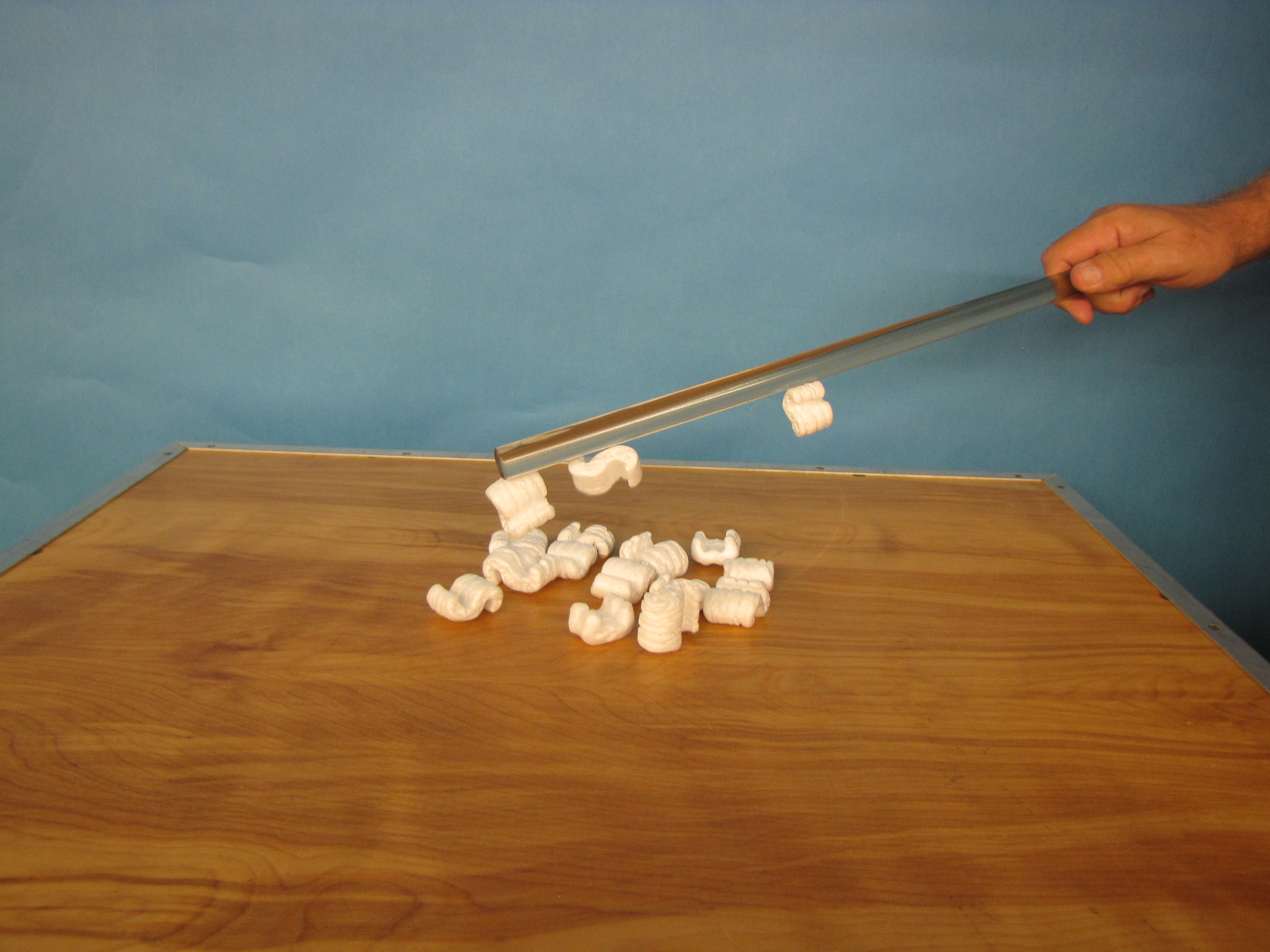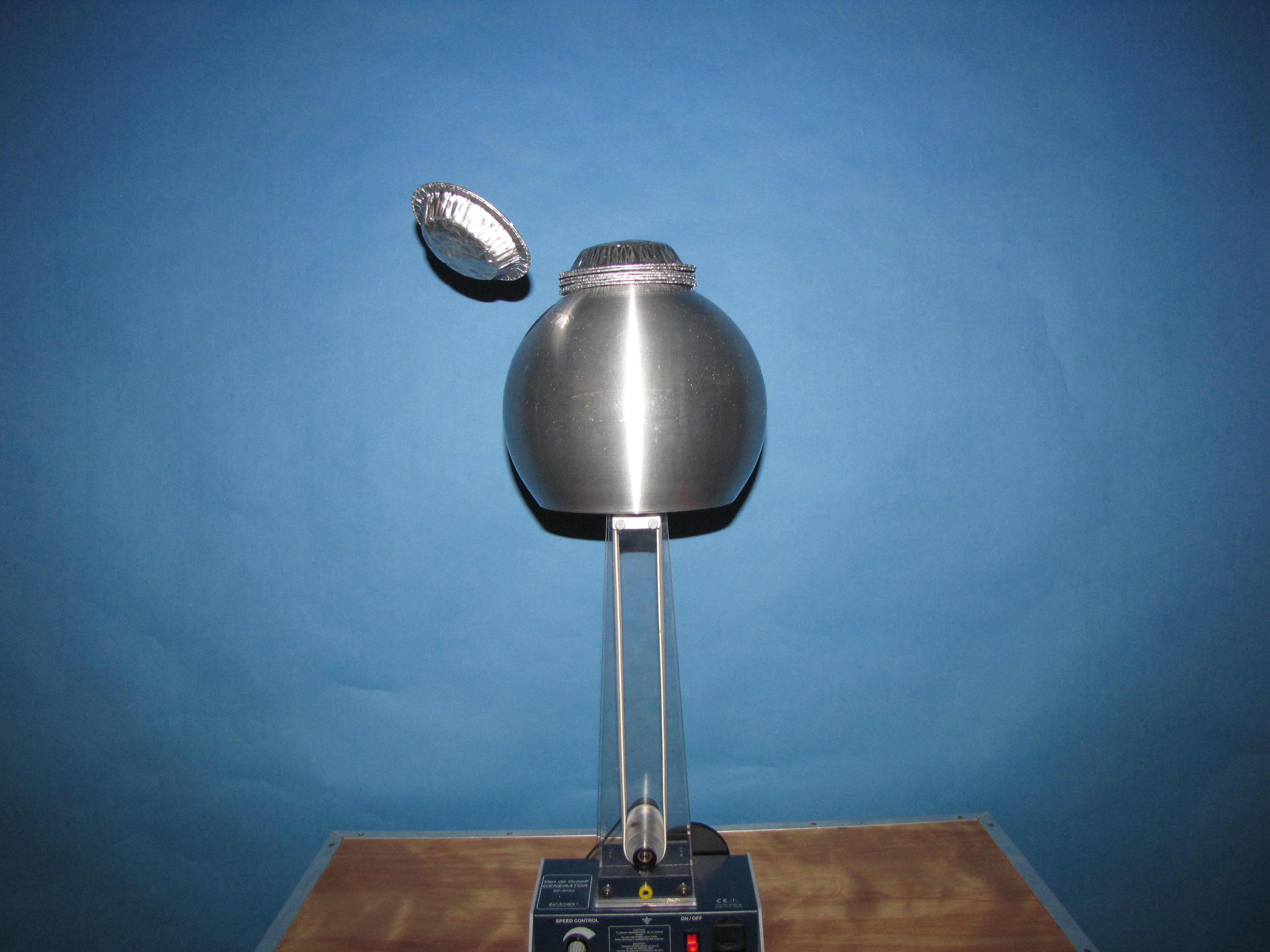Demos: 5A-02 Interactions of Electric Charge


- Small bits of paper (from a paper punch) are attracted by a charged rod. The charge on the rod may be of either sign, i.e. the glass rod or the rubber rod.
- A suspended pith ball is attracted by the rubber rod and then repelled after the rod touches the ball.
- A pair of suspended pith balls (or ping pong balls) are charged separately by contact using the rubber rod. The balls repel each other.
- Small rubber balloons may be charged by rubbing the balloon on a jacket or shirt. It can then be placed on a wooden door, where it sticks.
- Pour out the paper pieces onto the desktop. (We suggest you use the overhead camera for better visibility.) Rub the ebonite rod briskly with the fur and bring it near the paper. The paper pieces will immediately jump to the rod. You can do the same with the glass rod and silk cloth, showing that the process does not depend on the sign of the charge.
- Charge the ebonite rod with fur and bring it slowly toward the pith ball. At first there will be an attraction, then when the ball touches the rod it will be repelled.
- Charge the ebonite rod and stroke it across the pith balls separately. (You may need to recharge the rod between strokes, especially if the humidity is high.) The balls will stand out away from each other, the amount depending on the strength of the charge.
- To make the balloons stick to the door, it is essential that you use small balloons (small weight). Rubbing the balloon briskly on your shirt or blouse or jacket and press it against the door.
In all of the demonstrations listed above, you should rub the rods briskly and for enough time to insure a good charge.
If you wish to add a little humor to the Demo No. 4 (balloons), first rub the balloon on your hair, then stand next to the door and bang your head against the door as if it had attracted your head!
Applications: Refer to the many occasions in which objects exhibit “static cling.”
Last Updated: Nov 30, 2023 11:25 AM